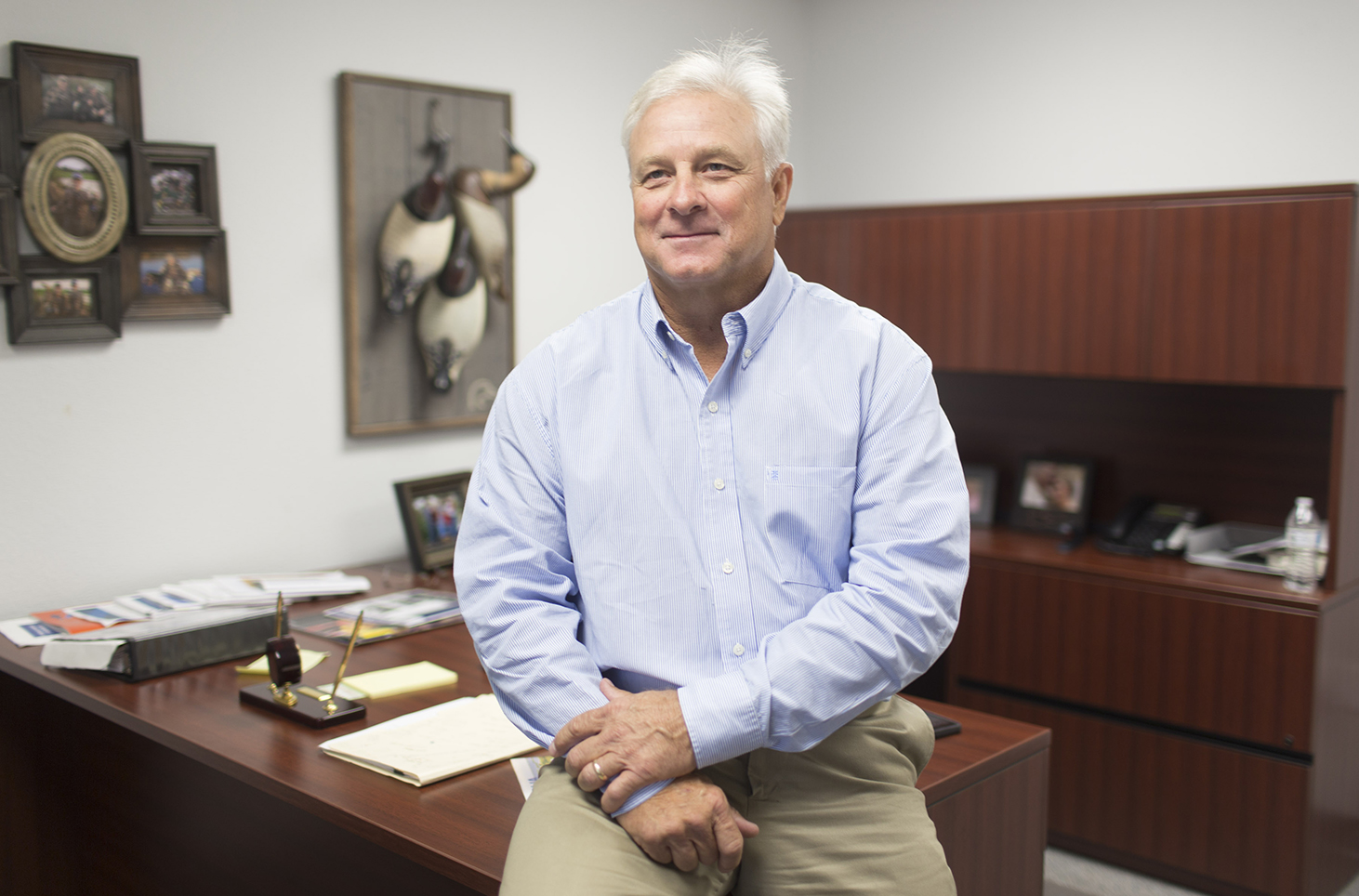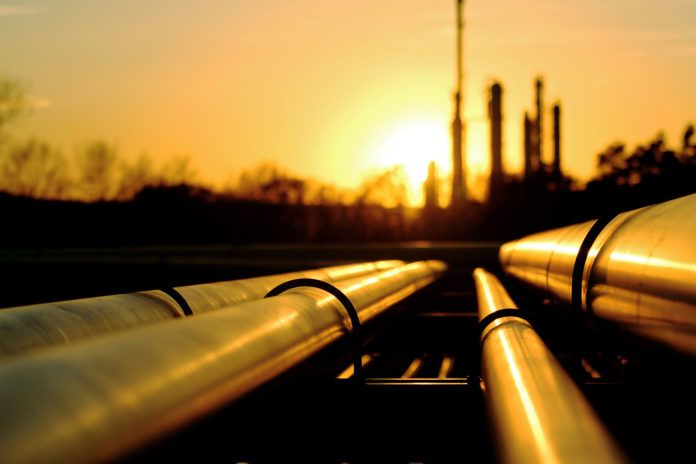This story has been updated since its original publication to correctly attribute the source of information from CF Industries.
In an economic landscape shaped by anemic global growth, low oil prices and a strong U.S. dollar, many chemical industry proponents hope that Louisiana’s plant owners will focus instead on long-term demand variables and move forward with the more than $24 billion in capital investment currently in the queue.
Four Louisiana parishes in particular—St. James, St. John, Calcasieu and Ascension—have the most to gain from projects announced since 2012, since more than 80% of the projects in the FEED (front-end engineering and design) stage are located there.
Economist Loren Scott of Loren C. Scott & Associates says the primary reason the chemical industry is “tapping the brakes” continues to be low natural gas prices in Europe and China. Since overseas natural gas prices move in tandem with oil prices, unlike in the U.S., the falling price of oil has made these countries more price competitive. Natural gas is not only a popular source for fuel but also a raw material used in a variety of chemical processes.
Many of the planned projects were announced when market conditions were decidedly different, with oil hovering around $100 a barrel and natural gas prices much higher abroad—a formula that makes the U.S. more attractive for investment.
However, in October Scott took a more optimistic tone, pointing to recent increases in the price of oil as an encouraging sign and one that could lead to a widening competitive advantage for Louisiana plants. “OPEC has gotten together to put a cap on the production of oil, and Russia did the same,” he adds. “If these folks really follow through, you are going to see the price of oil drift upwards.”
A long-term view
Rhoman Hardy, plant manager at Shell Chemical in Geismar, says his plant’s $717 million alpha olefins expansion—expected to make it the largest alpha olefins producer in the world when it begins production in late 2018—has not been significantly impacted by short-term variables, adding that Shell takes a 20-year outlook for demand when planning projects.
Alpha olefins are the building blocks for a variety of consumer products, such as detergents, plasticizers and synthetic lubricants. Increasing demand for polyethylene is expected to drive the global alpha olefins market, along with the growth of automotive and consumer goods industries, particularly in the emerging markets of the Asia Pacific region and Latin America.
“What creates the demand for these products? For one thing, it’s general population increases (worldwide),” Hardy says. “Also, as parts of the world become wealthier, the consumer products they want change. We think through these drivers, and that’s why you see so much investment in the chemical business.”
Still, Hardy says short-term factors undoubtedly play a role in the timing of investments. “I don’t think it changes the long-term trajectory, but the time frame and how things happen, are definitely impacted,” he adds. As such, he says “we’re managing our costs extremely closely” on the current project.
Some in the methanol market also remain bullishly optimistic about long-term demand. Methanex Global Market Development Senior Manager Jason Chesko says the energy market has seen significant growth in demand for the product, which has prompted continued investment. “If you look at methanol today, it’s being used primarily as a vehicle fuel, in power generation and in biodiesel fuel,” Chesko says. “The industry is growing at a pretty high rate. A large part of that is being driven by the use of methanol for energy applications. Power generation, biodiesel … that’s where we’re seeing the higher growth rates.”
As much as 60% of demand for methanol comes from chemical derivatives. “Methanol is the building block for hundreds of products that touch our lives daily—paints, plastics, solvents, resins … they all use methanol,” says the Methanol Institute CEO Greg Dolan. “It’s a very simple molecule, which makes it a good building block for making other things.”
By far, China is methanol’s biggest consumer, despite a leveling off of the economy there. A growing market in China is the conversion of methanol to olefins, which are a raw material used to create synthetic rubber and plastics, among other products.
Meg Mahoney, public affairs manager at the Methanex plant in Geismar, won’t rule out the possibility of future expansions at her plant to meet general demand growth. “We have looked at a potential third plant in Geismar as part of our ongoing process to grow business,” Mahoney says.
In its most recent earnings statement, CF Industries—which recently completed a $2.1 billion ammonia plant expansion in Donaldsonville—also voices long-term optimism for its products. The substantial investment seeks to meet long-term demand for nitrogen fertilizer and takes advantage of the facility’s proximity to abundant natural gas, a skilled local workforce and multiple transportation channels. Still, the company notes in that statement that a challenging price environment through 2017 that could lead to decreases in exports, production curtailments and shutdowns at plants.
Skilled labor to catch up

One Louisiana parish with a lot on the line, Calcasieu, might actually benefit from a slight delay in projects going vertical, as it struggles to keep up with workforce demand. While Dale Logan, executive director of the Southwest Louisiana Construction Users Council in Lake Charles, has a “high degree of confidence that what they’re telling me will happen, will happen,” he concedes that the state’s largest project currently under construction—the $11 billion Sasol plant in Lake Charles—has slowed its pace a bit as the company closely eyes expenditures.
Logan adds that expected delays in queued projects “going vertical” would actually allow time for Lake Charles to recover from workforce strains. The Lake Charles area’s manpower needs are continuing their upward trajectory, and SLCUC forecasts manpower demand to peak at nearly 14,000 (for SLCUC member companies only) in March 2017 and remain near those levels through the fall.
The Baton Rouge area is already feeling the downturn, as reflected in the Greater Baton Rouge Industry Alliance’s July forecast. GBRIA’s Semi-Annual Contract Labor Forecast shows a reduction in large capital projects in 2017, with spikes in turnarounds occurring in late 2016/early 2017 followed by an overall slowing beginning midyear.
As a result, the overall workforce demand for Baton Rouge area plants is expected to steadily fall to less than 20,000 by the end of 2017, after peaking at nearly 30,000 this fall.
Connie Fabré, GBRIA executive director, says maintenance projects provide some necessary stability when major capital projects are put on hold. “Some people question the value of temporary construction and maintenance jobs, but when you look at them in aggregate, they make up a permanent workforce that has supported the Baton Rouge area for more than 100 years,” Fabré says.
In a recent report published by the American Chemistry Council in Washington, D.C., Kevin Swift, senior economist, acknowledges that national projections for chemical industry growth in the near term have been downgraded since the end of 2015, as headwinds from the high dollar and weakness in the economy and in manufacturing have softened demand.
Still, Swift predicts capital spending will grow by 7.8% in 2017 and 7.2% in 2018, and that the most dynamic growth will occur in the Gulf Coast region over the next five years.
Turning to the long term, the ACC expects the growing popularity of shale gas in the U.S. to foster new investment and new capacity in the chemical industry, increasing access to affordable natural gas supplies. In fact, the report adds that U.S. basic chemicals (inorganic chemicals, petrochemicals, plastic resins, synthetic rubber and manufactured fibers) are already experiencing the effects of renewed competitiveness from shale gas, with basic chemicals production anticipated to grow 4.9% in 2017.
State-specific investment drivers

Regardless of national or worldwide demand variables, recent actions by Louisiana state government could negatively impact Louisiana’s ability to compete with neighboring Texas for chemical investment dollars in 2017.
Dan Borné, outgoing president of the Louisiana Chemical Association, says Louisiana’s current environment could prompt capital for projects in the FEED stage—currently totaling more than $60 million when including refineries and petroleum—to be diverted elsewhere. Borné fears that increased economic burdens placed on business by state government will make the task of attracting and/or retaining industry immeasurably more difficult.
“Previous legislatures and governors supported taking the sales and use tax off of machinery and equipment, or taking the tax off of utilities and natural gas,” Borne adds. “Now those taxes have been re-imposed, albeit for a temporary period, but with no clear path as to whether there are going to be changes or whether those will be extended or even increased. These are very important inputs because of the magnitude of the natural gas and electricity that these companies use and the billions of dollars in equipment and machinery that they buy.”
He adds that other issues—such as the industrial tax exemption [see page 12] and how it will be administered in coming years—compound the problem, creating uncertainty that could significantly impact industry’s willingness to expand in Louisiana.
Economist Scott says while state government had legitimate reasons for re-imposing the taxes, the long-term implications could be costlier. “One might argue, reasonably, that we needed to have business share in the cost of government, so we raised taxes on businesses a lot these last 12 months. But we also need to understand that this is just math. Somewhere in these companies (planning industrial investments) there is an accountant that has to figure the rate of return on the equity.
“What we did with these taxes is we moved the dial away from Louisiana. It’s not a matter of feelings or emotions, it’s just math.”
Borné agrees. “When you take into consideration the economic variables that we’re dealing with here, meaning oil very low, competition from around the country and the world, the imposition of business taxes that Texans don’t have to pay and a change of philosophy … to some degree it goes into the decision-making process of these companies.”
Originally published in the fourth quarter 2016 edition of 10/12 Industry Report.







